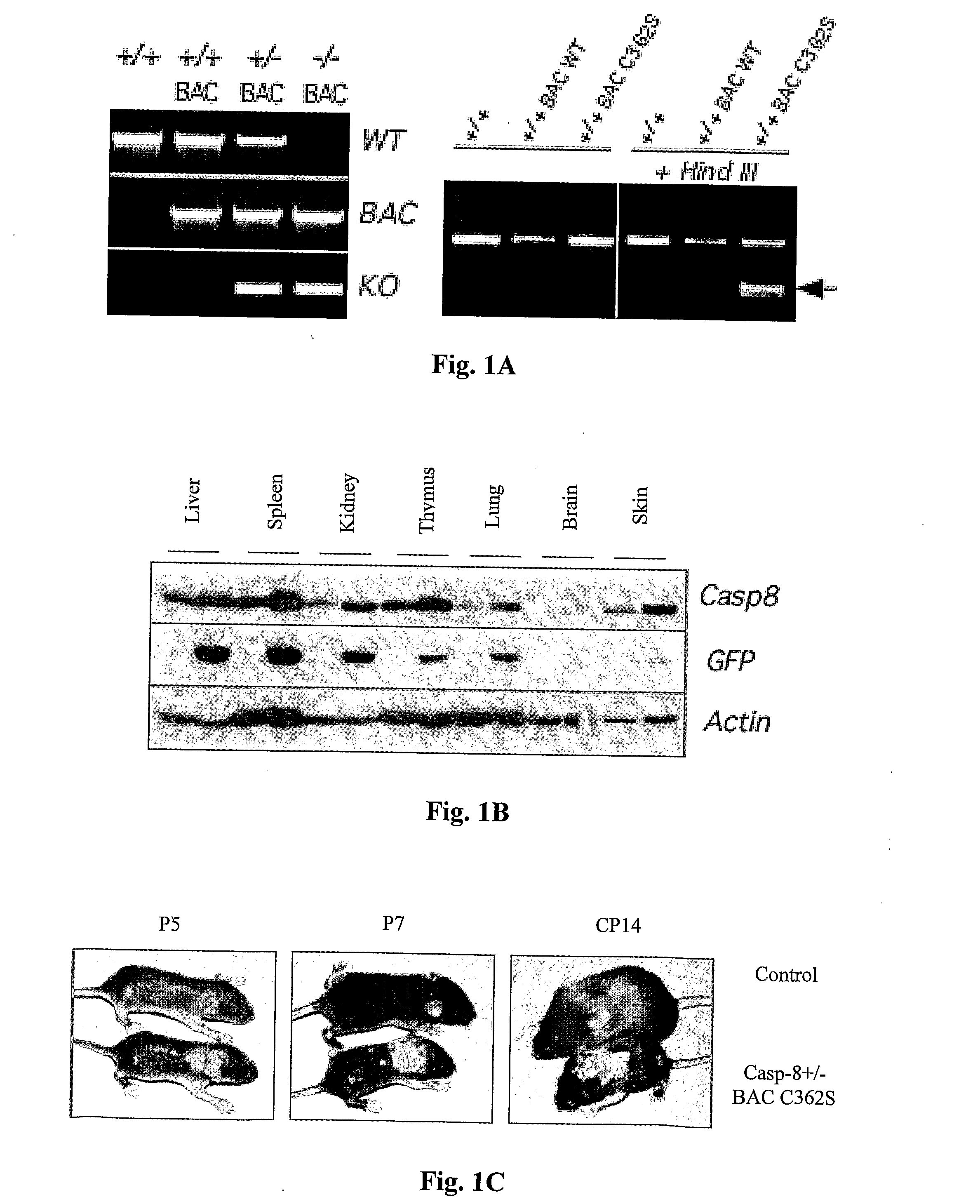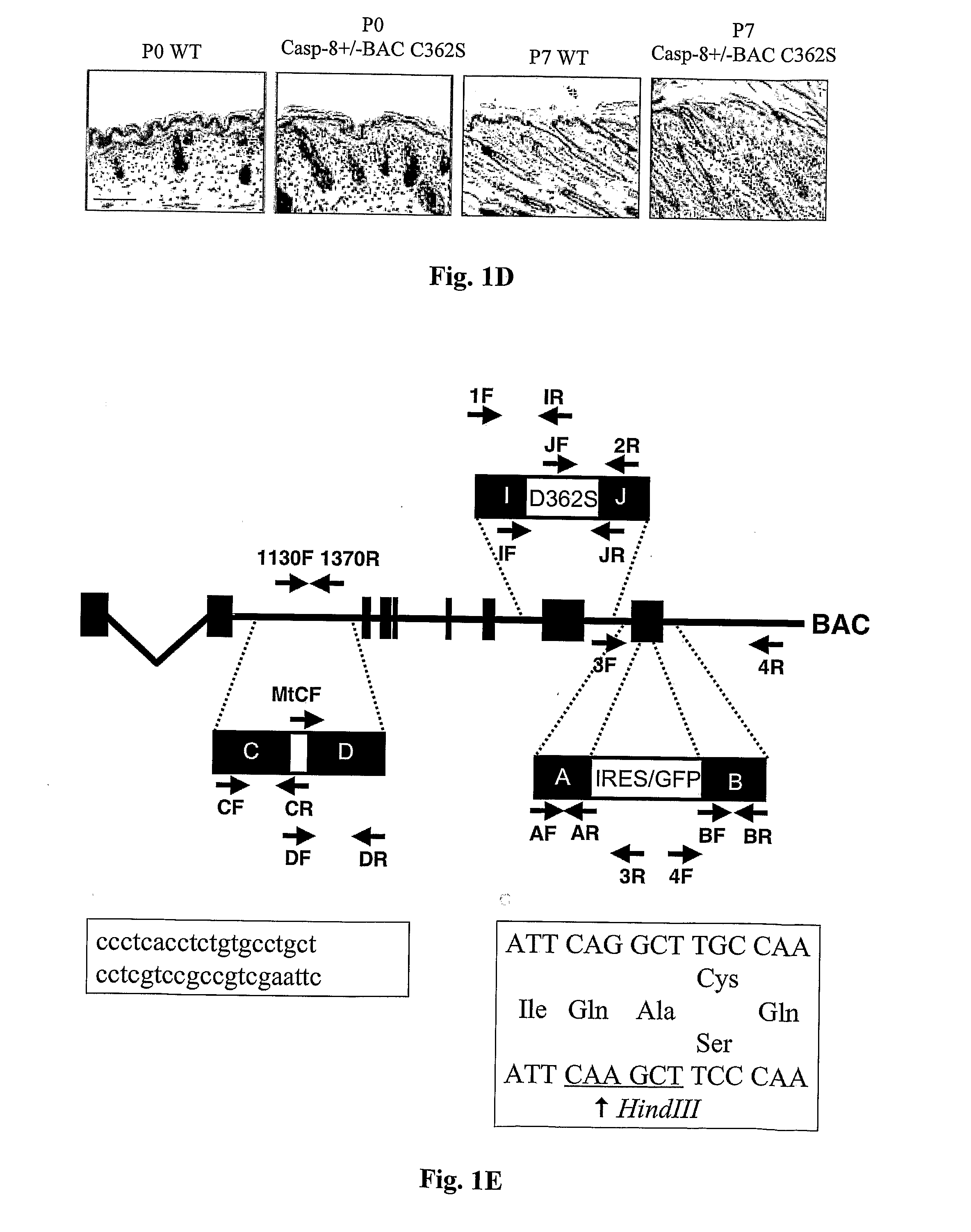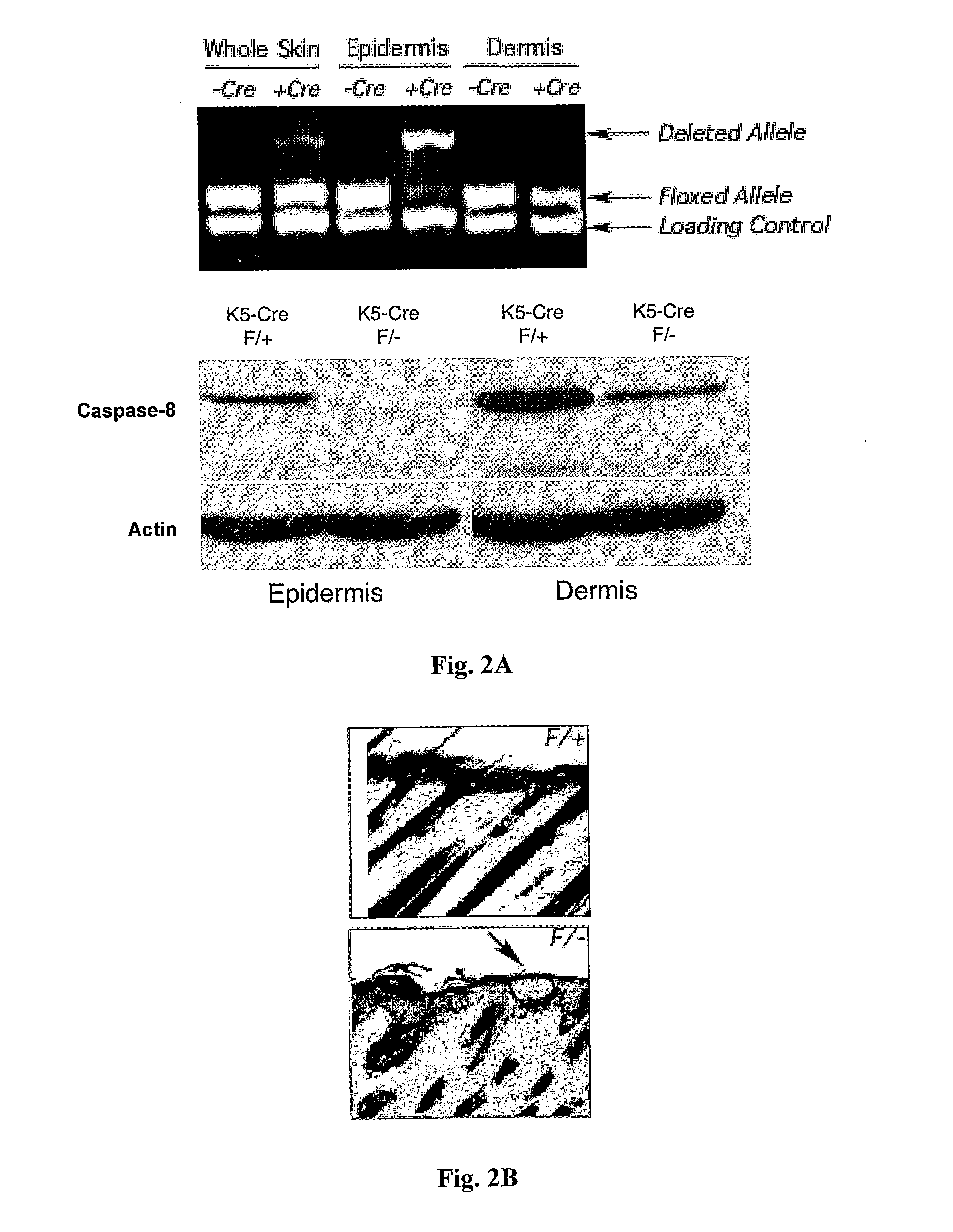Pharmaceutical Compositions and Diagnostic Methods for Inflammatory Skin Diseases, Disorders or Conditions
a technology of inflammatory skin diseases and compositions, applied in the field of caspase8 activity, can solve the problems of ad being refractory to treatment, psoriasis (exfoliative psoriatic dermatitis) being refractory to therapy, and little knowledge of the relative contribution of the different caspases to these non-apoptotic functions or mechanisms, and achieve the effect of preventing or reducing skin pathology
- Summary
- Abstract
- Description
- Claims
- Application Information
AI Technical Summary
Benefits of technology
Problems solved by technology
Method used
Image
Examples
example 1
Normal Growth and Differentiation of the Epidermal Keratinocytes Depend on Caspase-8 Function
[0175]To explore structure-function relationship in caspase-8 for the various effects that this enzyme exerts in vivo, we employed bacterial artificial chromosome (BAC) mediated transgenics (for details see Materials and Methods) to generate mice that apart from their endogenous caspase-8 alleles express an additional copy of the caspase-8 gene, or various mutants thereof (FIG. 1A). These transgenics were expressed ubiquitously, manifesting the same tissue-specific expression pattern as that observed for the endogenous gene (FIG. 1B). Mice expressing the wild type transgenic (Casp-8+ / + / BAC-WT) appeared normal, even after deletion of the endogenous caspase-8 alleles by mating these mice with caspase-8 knockout mice. On the other hand, mice expressing an active-site mutant of the enzyme, devoid of enzymatic activity (Casp-8BAC-C362S) developed skin pathology (FIG. 1C). Mice that in addition to...
example 2
Caspase-8 Conditional Knock Out Mice Confirm the Role of the Function of Caspase-8 in Skin Disease Development
[0177]In order to validate that the skin epidermal pathology observed in the mice expressing the Casp8BAC-C362S trangene reflects a functional role of caspase-8 in the epidermal cells themselves, we employed mice with a conditional caspase-8 allele to delete caspase-8 specifically in these cells (for details see Materials and Methods). Crossing mice in which part of one of the caspase-8 alleles was flanked by loxP sites and the other allele was deleted (Casp-8fl / −) with a transgenic mouse lane that expresses Cre under control of the kertatinocyte-specific Keratin-5 promoter resulted in effective and exclusive deletion of the caspase-8 gene in the epidermis as shown by PCR and Western blot analysis (FIGS. 2A and 2B).
[0178]For Western blot analysis, skin was removed from P0 Casp-8fl / −K5-Cre mice and incubated for 2-3 seconds at 65° C. to separate epidermis and dermis. Both the...
example 3
Contribution of TNF to the Skin Inflammatory Disease Associated with Caspase-8 Deficiency in Keratinocytes
[0181]Arrest of activation of the p65 NF-kB protein in the skin keratinocytes, by knockout of either p65 itself or of IKK2, the kinase mediating p65 NF-kB activation, also results in inflammatory skin disorder (Hu et al. 1999, Pasparakis et al. 2002). In that case, the disorder was shown to be triggered by chronic autocrine stimulation of the keratinocytes by TNF and a resulting enhancement of Jun phosphorylation, which, in the absence of a restraining effect of co-activated p65 occurs to an excessive extent. To explore the relationship between this skin inflammatory process and that which occurs as a result of caspase-8 deficiency in the keratinocytes, we assessed the contribution of TNF to the latter. Deletion of either the TNF gene or the TNF receptor 1 (TNFR1) gene in the Casp-8fl / −K5-Cre mice by crossing them with the respective knockout mice resulted in a marked delay of i...
PUM
| Property | Measurement | Unit |
|---|---|---|
| Tm | aaaaa | aaaaa |
| temperature | aaaaa | aaaaa |
| temperature | aaaaa | aaaaa |
Abstract
Description
Claims
Application Information
 Login to View More
Login to View More - R&D
- Intellectual Property
- Life Sciences
- Materials
- Tech Scout
- Unparalleled Data Quality
- Higher Quality Content
- 60% Fewer Hallucinations
Browse by: Latest US Patents, China's latest patents, Technical Efficacy Thesaurus, Application Domain, Technology Topic, Popular Technical Reports.
© 2025 PatSnap. All rights reserved.Legal|Privacy policy|Modern Slavery Act Transparency Statement|Sitemap|About US| Contact US: help@patsnap.com



